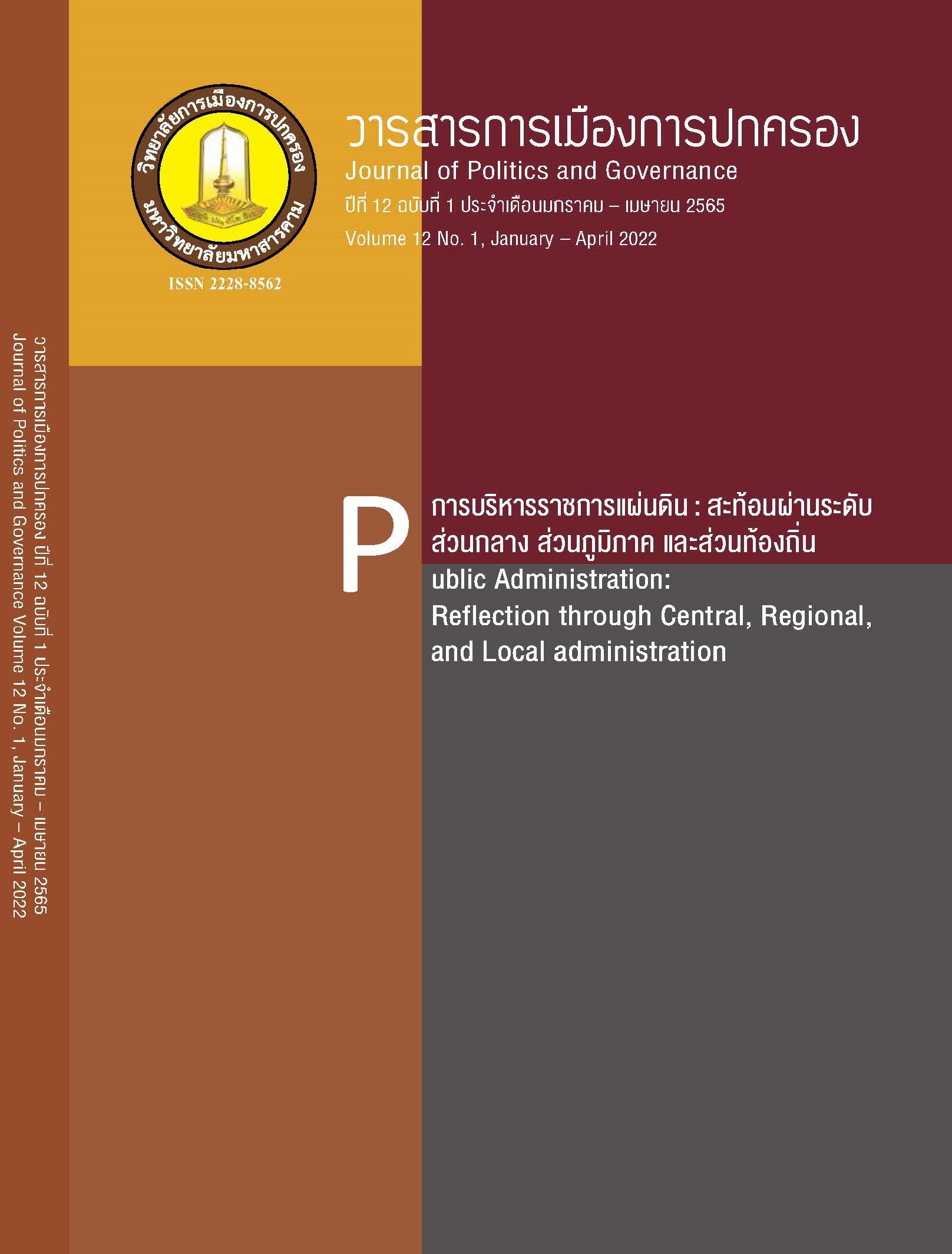Legal Measures to Scrutinize an Officer’s Arresting Power Exercise in a Case of Flagrant Offences
Main Article Content
Abstract
The objectives of this research are as follows; first, to study the concepts and theories relating to an officer’s power exercise as well as the concepts and theories relating to an arrest in a case of flagrant offences; second, to compare the legal measures to scrutinize an arrest in a case of flagrant offences in France, in the United States of America (USA) and Thailand; third, to analyze and to compare the legal aspects and relating topics on arrest power and legal measures to scrutinize the arresting power exercise in a case of flagrant offences. Results show that French and Thai legal provisions on arresting in a case of flagrant offences share some similarities. But Thai legal measures to scrutinize an officer’s arresting power exercise in a case of flagrant offences are similar to American legal measures. Moreover, there are sharp differences between Thai and French legal provisions on roles of organizations in justice systems and participation in a scrutiny. In other words, French legal provisions stipulate principles of prosecution, arresting and investigation in a case of flagrant offences, all in details. Special check-and-balance measures are also provided. Meanwhile, such provisions are absent from Thai and American legal provisions. There is no specific investigation procedure for flagrant offences. Court is the only external organization authorized to scrutinize an officer’s arresting power exercise in a case of flagrant offences: whether there are probable causes or urgencies to justify the arrests or not. As a result, in Thailand, there should be statutes to provide a special investigation procedure for flagrant offences. Moreover, like in French legal system, there should be regulations to allow the public prosecutor and the court to scrutinize an arrest in a case of flagrant offences at the initial stage together with the police, especially in a case of serious criminal offences.
Article Details
References
คณิต ณ นคร. (2531). ความเป็นประชาธิปไตยในกระบวนการยุติธรรม. รพี 31 คณะนิติศาสตร์ มหาวิทยาลัย ธรรมศาสตร์.
______. (2541). กระบวนการยุติธรรมกับปัญหาความโปร่งใสและระบบการตรวจสอบตามรัฐธรรมนูญใหม่. วารสารบทบัณฑิตย์. 54(4), 47-55.
จุตติ ธรรมมโนวานิช. (2537). หลักกฎหมายและแนวปฏิบัติว่าด้วยการจับและการแจ้งข้อหา, การควบคุมและฝากขัง, การค้น และการปล่อยชั่วคราว. ภาควิชากฎหมายวิธีสบัญญัติ ส่วนวิชากฎหมาย โรงเรียนนายร้อยตำรวจ.
ธเนศ ชาลี. (2540). มาตรการควบคุมการเริ่มต้นคดีของตำรวจ. (วิทยานิพนธ์นิติศาสตรมหาบัณฑิต). สาขากฎหมายอาญา คณะนิติศาสตร์ มหาวิทยาลัยธรรมศาสตร์, กรุงเทพฯ.
พิมพ์เพ็ญ พัฒโน. (2542). กลไกทางกฎหมายในการคุ้มครองสิทธิตามรัฐธรรมนูญแห่ราชอาณาจักรไทย พ.ศ. 2540: ศึกษากรณีการจับ. วิทยานิพนธ์นิติศาสตรมหาบัณฑิต. สาขากฎหมายอาญาและกระบวนการยุติธรรมทางอาญา คณะนิติศาสตร์ จุฬาลงกรณ์มหาวิทยาลัย, กรุงเทพฯ.
เมธา วาดีเจริญ. (2539). บทบาทของเจ้าพนักงานตำรวจในการสอบสวนคดีอาญา “ทฤษฎีกับปฏิบัติทำได้แต่ไม่ค่อยจะตรงกัน. กรุงเทพฯ: สูตรไพศาล.
สถาบันกฎหมายอาญา. (2540). สารานุกรมกระบวนการยุติธรรมนานาชาติ. กรุงเทพฯ: สถาบันกฎหมายอาญา.
สถาบันกฎหมายอาญา. (2542). รายงานการสัมมนาทางวิชาการโครงการ “เวทีความคิดเพื่อการพัฒนากระบวน การยุติธรรมไทย” เรื่อง “กระบวนการยุติธรรมกับการสร้างความโปร่งใสและระบบการตรวจสอบตามแนวทางในรัฐธรรมนูญใหม่. วารสารบทบัณฑิตย์, 55(4), 125-166.
อริยา มนูสุข. (2547). การจับ: ศึกษาเฉพาะกรณีความผิดซึ่งหน้า. (วิทยานิพนธ์นิติศาสตรมหาบัณฑิต). สาขากฎหมายอาญาและกระบวนการยุติธรรมทางอาญา คณะนิติศาสตร์ มหาวิทยาลัยธุรกิจบัณฑิตย์, กรุงเทพฯ.
อุทัย อาทิเวช. (2546). การจับการค้นในประเทศสหรัฐอเมริกา. เอกสารประกอบการเรียนการสอนวิชาสิทธิมนุษยชน. มหาวิทยาลัยธุรกิจบัณฑิตย์.


